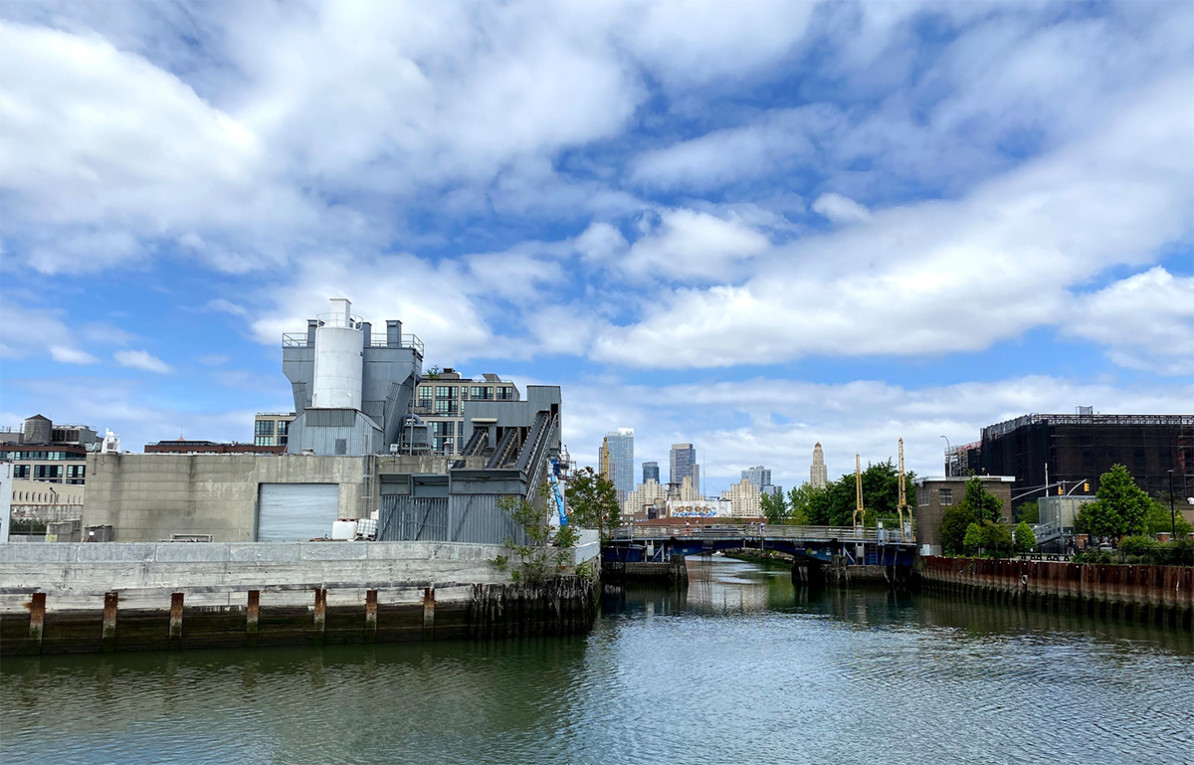Client concentration isn’t a topic that comes up much when I chat with other agency operators. The most common references to client concentration I’ve heard are usually concerns from folks who rely heavily on a single client for most of their revenue.
Agency business experts and 2Bobs podcast hosts Blair Enns and David C. Baker recommend that creative firms should have a roster of around 8-15 clients. This doesn’t matter if you’re doing $1 million a year in revenue or $20 million. They also recommend keeping clients at under 25% of annual billings to prevent risky concentration that could put your firm under should a client suddenly disappear.
The thinking behind 8-15 clients is that any more would spread your firm too thin, making it hard to provide deep expertise and comprehensive services to your clients. The goal would be to cultivate and grow a roster of less than 15 clients and become a trusted service provider that’s deeply embedded in the client’s growing business.
Here are links to a couple articles by David C. Baker on client concentration if you’re interested:
Client Concentration Analysis Tool
I put together an analysis tool on Google Sheets for anyone looking to explore their agency’s client concentration. Much like I did in my previous spreadsheet tools – the Agency Owner Comp Model and Project Profit Calculator – I’ll run through a few different scenarios to show the tool in action and to explore what client concentration can say about an agency.
Scenario 1: The First Million
At Barrel, it took us five years to break a million in annual revenue (yup, we took our sweet time). I put in some comparable numbers to show how our first $1 million+ year broke down in terms of client concentration.

While we billed 86 different clients that year (yes, a far cry from 8-15 clients), a large portion were for ad hoc support and maintenance work that lasted no more than a few days of work. If we just take the top 35 and lop off the other 51 clients, we still have our $1 million in billings.

You can see that the Top 35 clients make up 83.8% of the year’s total billings.
Our top client that year made up nearly 27% of our total billings, the highest concentration level we’ve ever had in 14 years of running Barrel.
There’s a lot that this type of analysis doesn’t reveal. They include questions like:
- Which clients drove most of the profits?
- How many projects made up these billing amounts per client? Was it just 1 big one or a series of small ones?
- What percentage of the work is project-based vs. recurring retainers/service contracts?
- Which clients turned out to have great long-term relationships with us?
A basic client concentration view like this tool helps to quickly show who’s given the agency the most money and what the potential hit could be if they were to go away. It’s a good starting point for thinking strategically about how one can evolve their agency client roster.
The top client who commanded 27% of our total billings would eventually go away completely 3 years later but not before being a Top 5 client for 2 more years.
How did we end up with 86 clients? The five previous years leading up to our first $1 million+ year were full of small projects for clients on smaller budgets. All of these relationships added up, and by year 5, we were inundated with requests for website updates, additions, and fixes all the time. We didn’t know how to handle these requests except to reactively do what was asked and charged whatever we could. It was only when we rolled out a streamlined support & maintenance offering that things became more manageable. Some of the earlier clients went away when our new packages priced them out. Over time, we ended up adding even more clients, but at much higher average annual billings.
I’ve seen agency founders log their first $1 million+ year in more elegant and cleaner ways. Some achieve it in their first year with an anchor client committing over $1 million. Others do it within a few years with a couple dozen clients. With more marketing-focused agencies, there are some that’ll use a potent lead generation strategy (e.g. great content marketing) to quickly build a roster of clients collectively generating over $100k/month in recurring revenue, almost like a SaaS business.
We were slow, but we eventually did get to a seven-figure business. And while I’m tempted to dissect and highlight things that we could have done differently or better, the path we took is the path we took. We can only hope to learn from it and make better decisions moving forward.
Scenario 2: Client Concentration Over 3 Years
In addition to a single-year client concentration template, I’ve included one that reviews client concentration over 3 years. This is an interesting way to see how client concentration may evolve year-to-year and how this reflects changes in the agency’s service offering or business model.
I put in comparable numbers from Barrel’s historical data of the year prior to the one shown in Scenario 1 (Year 2) and the year after. These are figures from nearly a decade ago – luckily, the numbers are larger today!

Once you paste in the clients and their annual billings for each of the years, you get a quick overview of the total billings, number of clients, and the largest single client concentration (“Top Concentration”) for each of the 3 years along with an average. As you can see, these three years were pretty strong growth years for us with lots of changes happening.
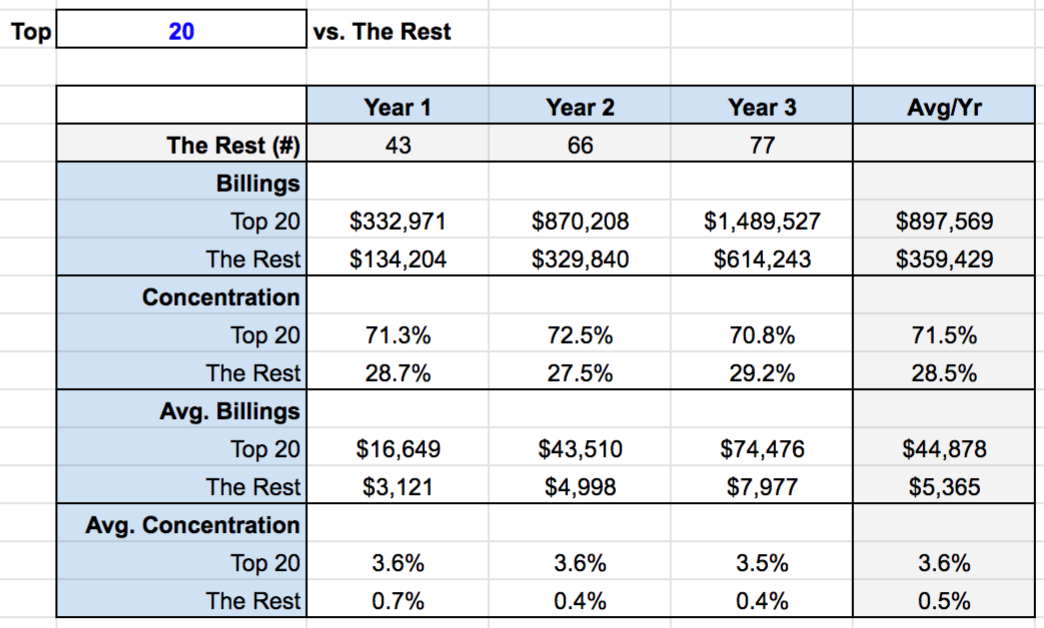
This particular view has a toggle area where you can put in a number to segment the Top X number of clients vs. “The Rest”. In the example above, I’ve segmented the Top 20 clients vs. The Rest. You can see how the billings split out as well as the average billings per client in the Top 20 segment vs. The Rest. You can see that in years 2 and 3, the Top 20 clients got more and more valuable, with the average billing nearly 10 times more for the Top 20 than The Rest.
Here’s a view when you input to see the Top 50 clients vs. The Rest:
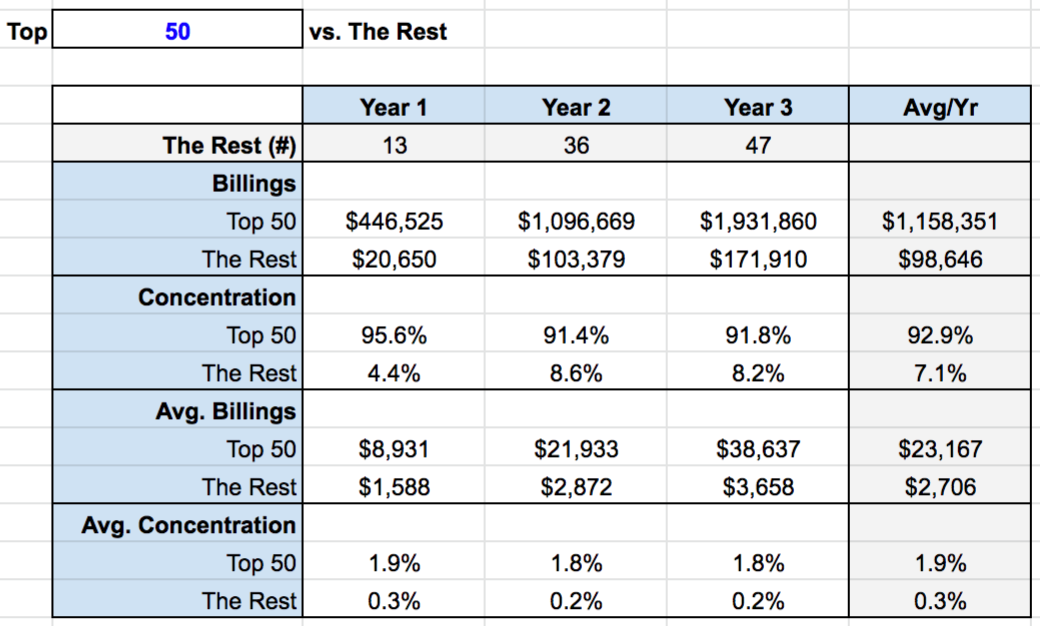
An obvious seeming question might be something like: “Goodness, 47 clients generating only $172k in Year 3? Why not just cut all those out so you can have less headaches and save on the overhead of managing so many clients?”
The client concentration analysis doesn’t show how these clients contributed to the overall profitability of the business. What if the $172k were of much higher margin projects and contributed $90k (52% margin) of profit to the business? And what if this was versus $380k of profit from the $1.9 million generated by the Top 50 (a paltry 20% margin)? Then all of a sudden, the $90k of profit makes up over 19% of all profits generated by the business that year. These weren’t the actual figures for us, but the scenario is plausible. Of course, this doesn’t mean it still makes sense to hold on to every client forever – it’s a continuous cycle of nurturing and pruning that has to be done each year.
The last view in this multi-year analysis template is a ranking of the Top 15 clients and their billings across those 3 years.
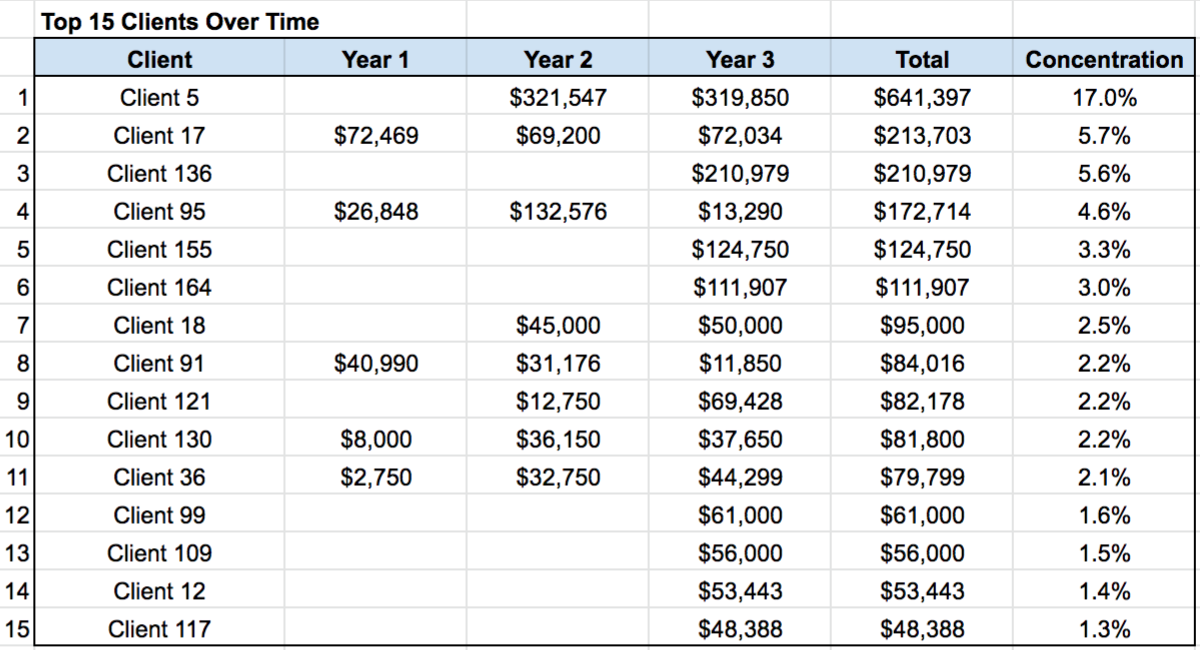
I’ve anonymized the client names in this example, but with real data, you’d be able to see who your top 15 clients were over a 3-year period and see how their billings changed from year to year.
In the past, I’ve created versions of this view for 5 years and it’s cool to see how some clients have come and gone throughout an agency’s history. I remember one particular client that started as a sub-$10k opportunity in Year 1 that later turned into a 6-figure client for multiple years and is now a Top 10 all-time client. They’re still with us today. In the example above, Clients 10 and 11 are similar in that they started with something small (or paid something late in Year 1) and then progressively grew in billings in Year 2 and 3.
The other takeaway from this is that Year 3 brought in 7 new clients that instantly made the Top 15, which makes sense given the 75% growth in billings from Year 2 to Year 3.
Scenario 3: The Well-Positioned, Expert firm
In the Scenario 3 tab, I turned back to the single year template to play around with a potential client roster of 14 clients generating over $8 million in billings. What could this looking like?
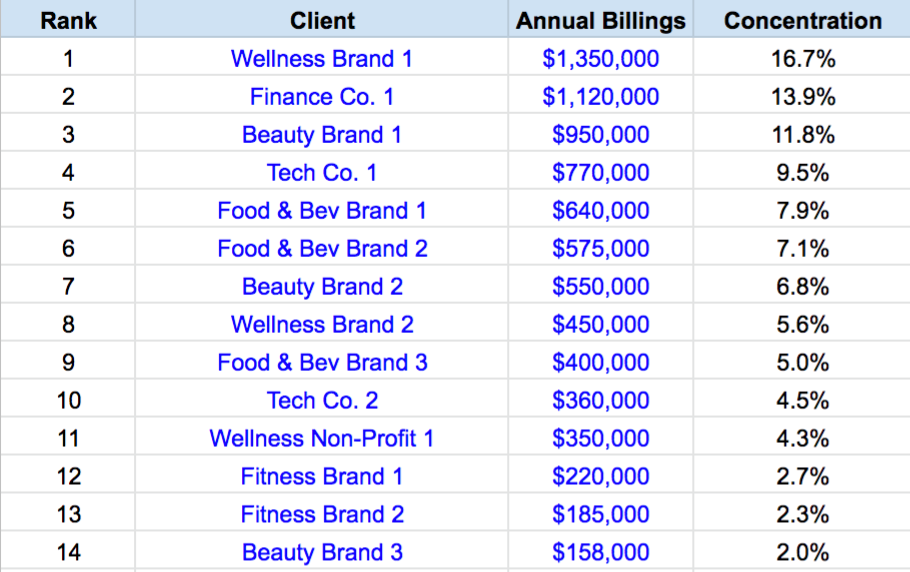
With our primary focus on wellness clients mixed with some non-wellness companies, I made up some numbers to come up with concentration levels that seemed reasonable.
I’d imagine that the 2Bobs hosts would approve of this type of client concentration with no single client exceeding 25% and a very manageable number of clients above 4% with a handful that seem like clients that can produce greater billings in future years. It reflects a well-positioned agency with the expertise to service deep-pocketed brands on multiple initiatives throughout the year.
Parting Thoughts on Client Concentration
If you’ve never done a client concentration analysis or it’s been a while since you did one, there’s some value in running the analysis and getting a view into where your 80/20 splits come in or to see if you’re at risk of being overly exposed to a handful of clients. If you’ve been in business for a while, the multi-year view can give you a fun walk down memory lane. However, the more interesting exercise when it comes to client concentration is imagining the future and taking a hard look at what may need to change in order for your current client roster to evolve.
I’ve tried my hand at imagining a client roster that hits the 8-15 client number (like Scenario 3) and I’ve also tried imagining what a 200 or 300-client roster might look like if we went a more productized services route. Whichever way we ultimately end up going, putting in the time to sketch the future is always a worthwhile exercise because it forces you to examine and even make plans for all the decisions, processes, org changes, and business development that’ll have to happen to make the desired future come true.
